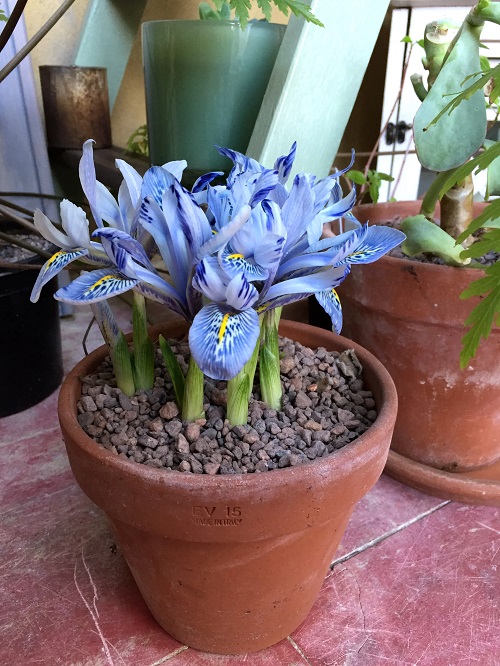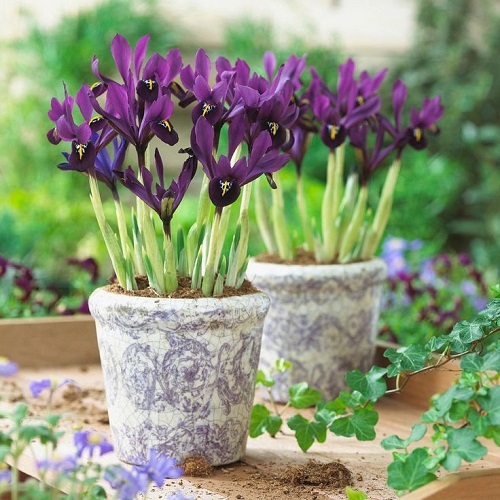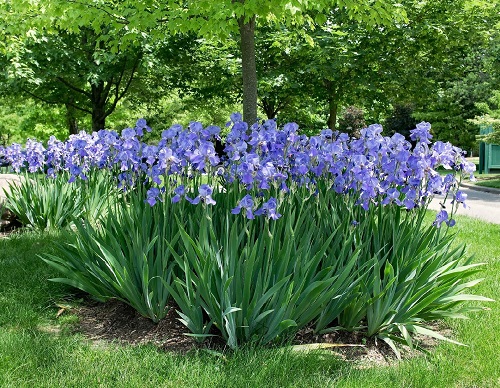Want to know When Do Irises Bloom? This guide will give you all the information about planting it at the right time.
The majestic iris is a favorite among gardeners and flower enthusiasts due to its striking colors and intricate petals. If you want to know – When Do Irises Bloom, then keep on reading!
Iris Plant Information
Irises are a type of flowering plant in the genus Iris, which is part of the Iridaceae family. The plant is native to various parts of the world, including Europe, Asia, and North America.
Irises are well-known for their flamboyant flowers, which are available in a wide range of hues and patterns, including blue, purple, white, and yellow. They are popular in gardens and are often used in floral arrangements.
If You Want to Know About Companion Plants for Iris, Check Here
When Do Irises Bloom?
In general, the iris tends to bloom in the late spring or early summer. However, it’s important to note that there are many different types of iris, and each one may bloom at a slightly different time.
The bloom can also vary depending on your location and climate, so it’s always a good idea to do some research on the specific type of iris you’re growing to get a more accurate idea of when they’ll bloom.
Check out our list of Flowers that Don’t Fade Before a Month Here
Reblooming Irises
Reblooming irises are typically hybrids that have been bred specifically to produce a second round of blooms. They’re often referred to as “remontant” irises, which come from the French word for “re-flowering.”
This means that not all iris are capable of reblooming – it’s a trait that has to be intentionally bred into the plant. Additionally, even among reblooming irises, not all of them will reliably produce a second round of blooms. However, with the right care and growing conditions, many reblooming irises can be encouraged to bloom again. So, what does it take to get your reblooming iris to produce that second round of blooms? Here are a few tips:
- Watering and fertilization: Make sure your reblooming irises are getting enough water and nutrients. Irises are fairly low-maintenance plants, but they do require regular watering and fertilization to thrive.
- Deadhead your irises regularly: This means removing any spent blooms (i.e., the flowers that have already bloomed and are starting to fade). This encourages the plant to put its energy into producing new blooms rather than trying to maintain the old ones.
- Give your irises plenty of sunlight: Irises need at least 6 hours of direct sunlight per day to grow and bloom properly.
Reblooming irises may take a little longer to produce their second round of blooms than their spring-blooming counterparts. But with a little care, you can enjoy these beautiful flowers twice as long!
Here are Some Pro Tips to Keep Your Plants Blooming Continuously & Longer
Significance of Irises Bloom

Irises have a rich history with a variety of uses and meanings. The significance of irises varies depending on culture and context. Here are some common uses and meanings associated with irises:
- Ornamental: Irises are commonly used in landscaping and gardening for their beauty and vibrant colors. They are often planted in gardens, borders, and rock gardens.
- Symbolic: In many cultures, irises are symbolic of wisdom, courage, and faith. In ancient Greece, the iris was associated with the goddess Iris, who was the messenger of the gods and a symbol of communication. In Japan, the iris is associated with good luck and protection.
- Medicinal: Some species of iris have been used in traditional medicine to treat a range of ailments, including inflammation, skin conditions, and respiratory problems.
- Perfumery: The essential oil derived from iris rhizomes is highly prized in the perfume industry for its sweet, floral scent. It is used in high-end perfumes and cosmetics.
- Culinary: In some parts of the world, iris rhizomes are used in cooking. In Italy, for example, the dried rhizomes of the iris Florentina are used to flavor liqueurs and baked goods.



